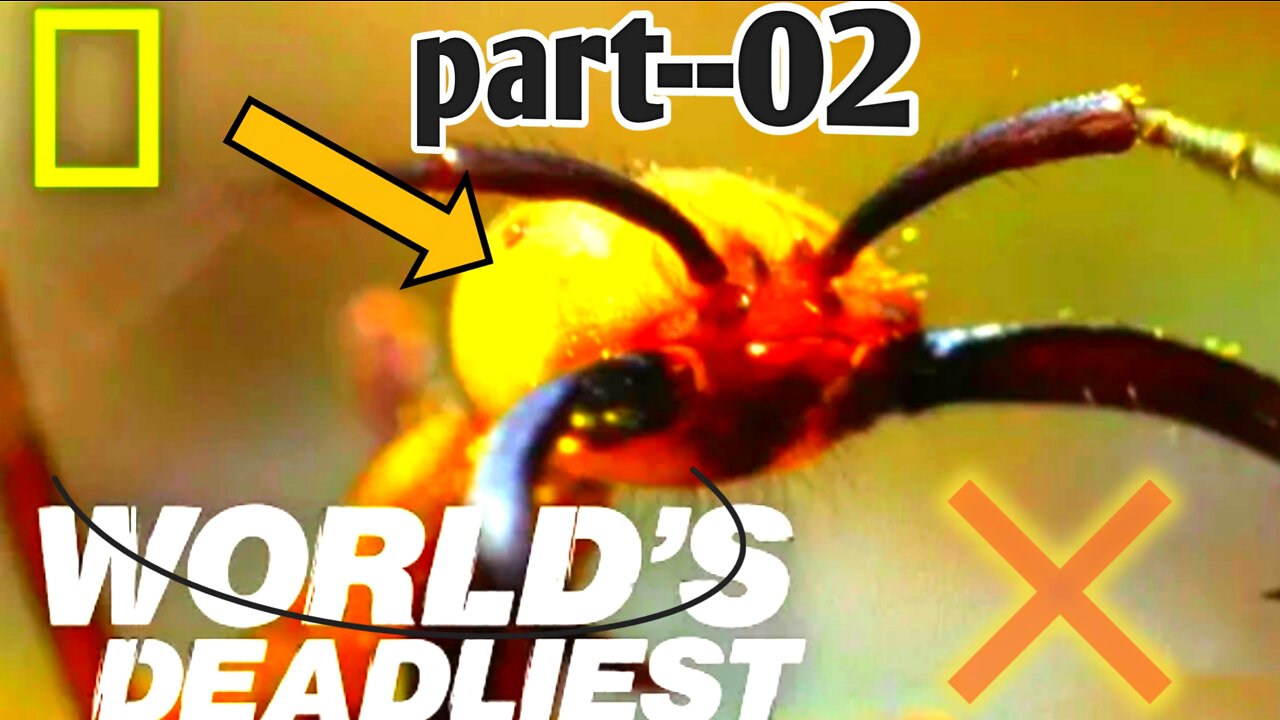Premium Only Content

National Geographic - Army Ants - BBC Wildlife Documentary | part --02
National Geographic - Army Ants - BBC Wildlife Documentary, The name army ant (or legionary ant or marabunta) is applied to over 200 ant species, in different lineages, due to their aggressive predatory foraging groups, known as "raids", in which huge numbers of ants forage simultaneously over a certain area.[1]
Another shared feature is that, unlike most ant species, army ants do not construct permanent nests: an army ant colony moves almost incessantly over the time it exists. All species are members of the true ant family, Formicidae, but several groups have independently evolved the same basic behavioral and ecological syndrome. This syndrome is often referred to as "legionary behavior", and may be an example of convergent evolution.[2][n 1]
Most New World army ants belong to the subfamily Ecitoninae, which contains two tribes: Cheliomyrmecini and Ecitonini. The former contains only the genus Cheliomyrmex, whereas the latter contains four genera: Neivamyrmex, Nomamyrmex, Labidus, and Eciton.[2] The largest genus is Neivamyrmex, which contains more than 120 species; the most predominant species is Eciton burchellii; its common name "army ant" is considered to be the archetype of the species. Old World army ants are divided between the Aenictini and Dorylini tribes. Aenictini contains more than 50 species of army ants in the single genus, Aenictus. However, the Dorylini contain the genus Dorylus, the most aggressive group of driver ants; 60 species are known.[citation needed]
Originally, the Old World and New World lineages of army ants were thought to have evolved independently, in an example of convergent evolution. In 2003, though, genetic analysis of various species suggests that they all evolved from a single common ancestor, which lived approximately 100 million years ago at the time of the separation of the continents of Africa and South America.[2] Army ant taxonomy remains in flux, and genetic analysis will likely continue to provide more information about the relatedness of the various taxa.
Copyright Disclaimer - Section 107 of the Copyright Act 1976, allowance is made for "fair use" for purposes such as criticism, commenting, news reporting, teaching, scholarship, and research. Fair use is a use permitted by copyright statute that might otherwise be infringing. Non-profit, educational or personal use tips the balance in favour of fair use..
#animalgossip #documentary #petvidios #Funnyanimals #animalslife
-
 2:23:55
2:23:55
Barry Cunningham
13 hours agoPRESIDENT TRUMP IS NOT PLAYING AROUND...AND THE LIBNUTS CAN'T STOP HIM!
100K64 -
 22:02
22:02
Stephen Gardner
19 hours ago🔥JUST IN: Trump BETRAYAL plot EXPOSED!
121K308 -
 38:32
38:32
The Why Files
21 days agoThe Real CIA Vol. 1: 693 Pages of Secret Crimes
133K61 -
 49:12
49:12
MattMorseTV
16 hours ago $22.72 earned🔴Zelenskyy is NOT HAPPY about Trump’s NEW DEAL.🔴
128K161 -
 1:03:49
1:03:49
Warren Smith - Secret Scholar Society
4 days ago"You are on the brink" - My Conversation with Nick Fuentes
93.2K66 -
 8:05
8:05
Tactical Advisor
17 hours agoNEW Best Budget AR15 | PSA Guardsman (FIRST LOOK)
84K29 -
 8:55
8:55
Warren Smith - Secret Scholar Society
3 days agoMatt Walsh EXPOSES a Leftist's Lie So Badly She Flees the Stage
71K32 -
 25:05
25:05
Digital Social Hour
17 hours ago $6.38 earnedScott Jennings: The Fight for Free Speech: Scott Jennings Speaks Out
54.8K14 -
 1:29:24
1:29:24
Steve-O's Wild Ride! Podcast
3 days ago $5.07 earnedDarby Allin Risked His Life And Career To Climb Mt Everest | Wild Ride #262
49.8K -
 49:33
49:33
Jeff Ahern
18 hours ago $7.43 earnedThe Sunday Show with Jeff Ahern
51.5K10